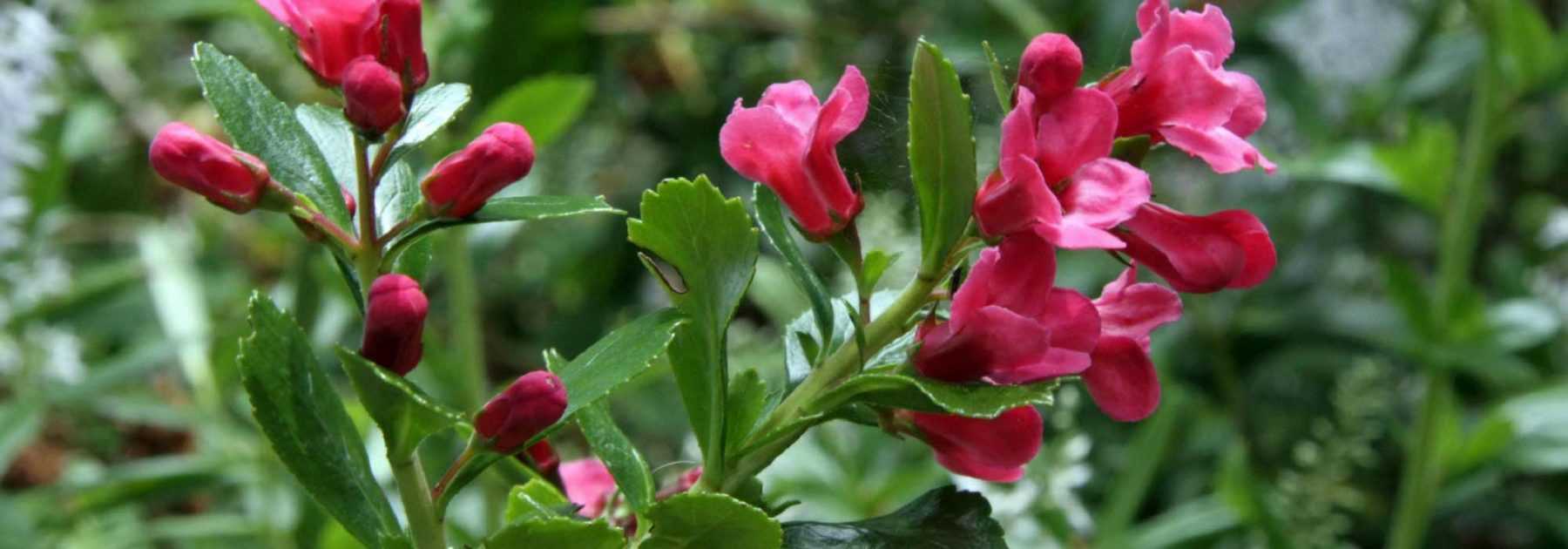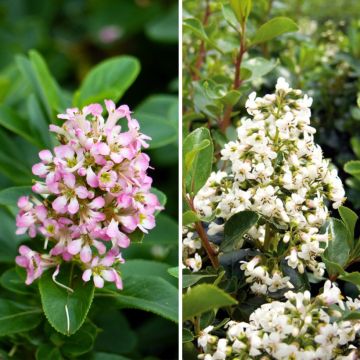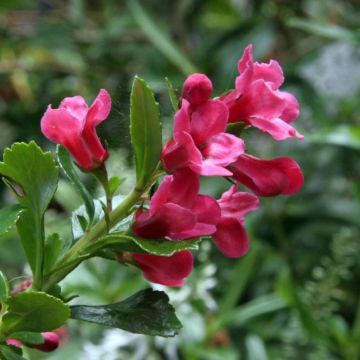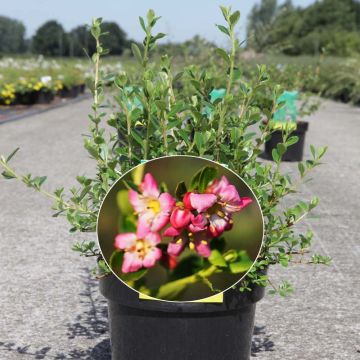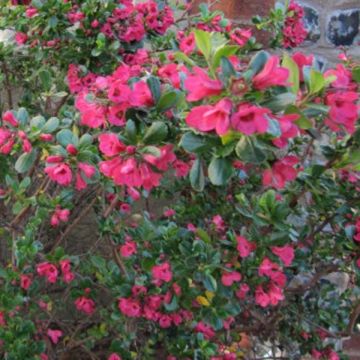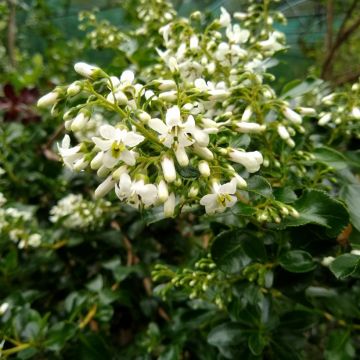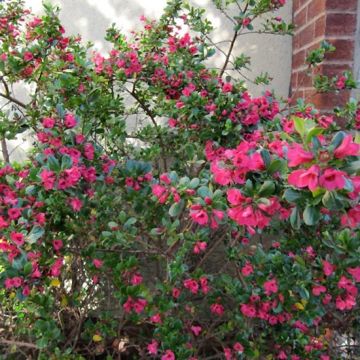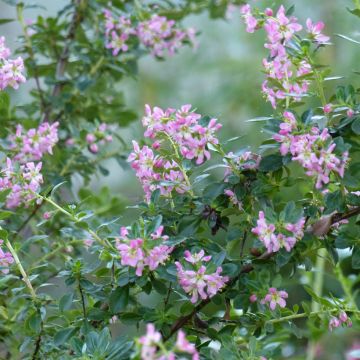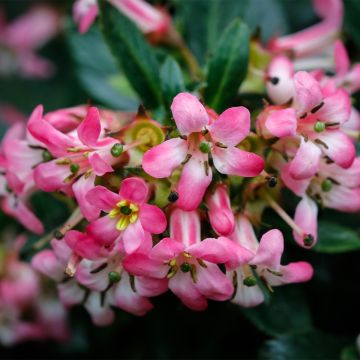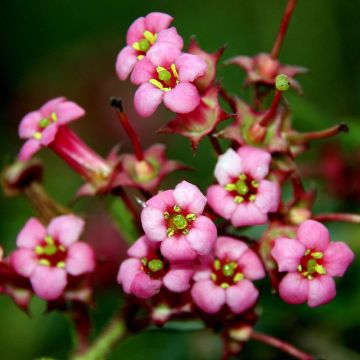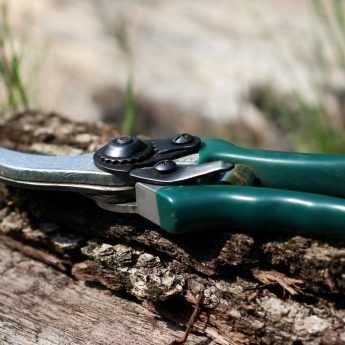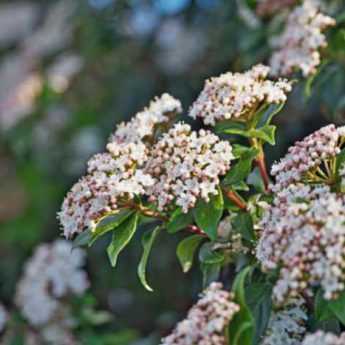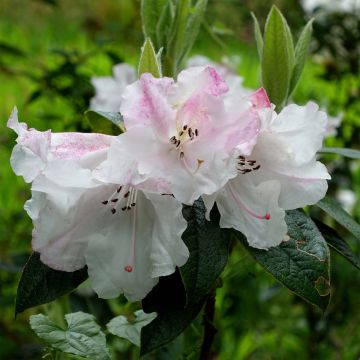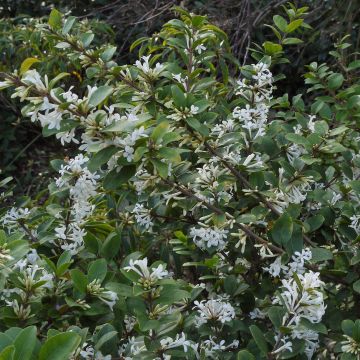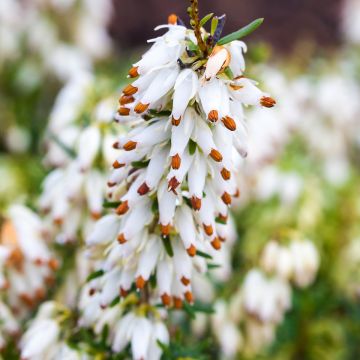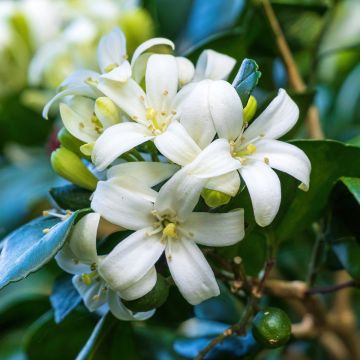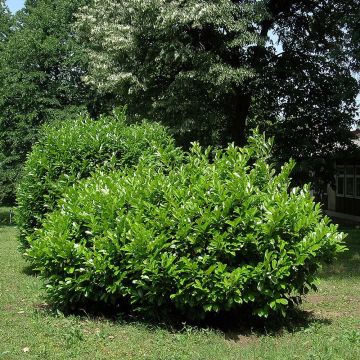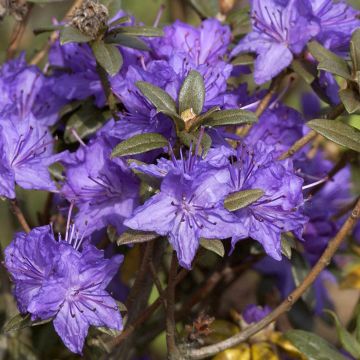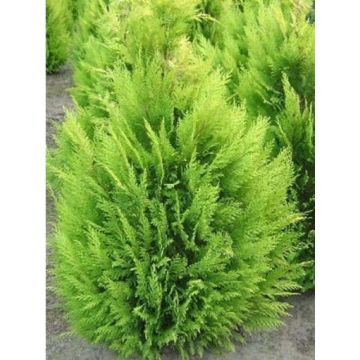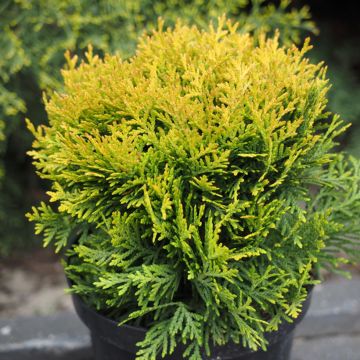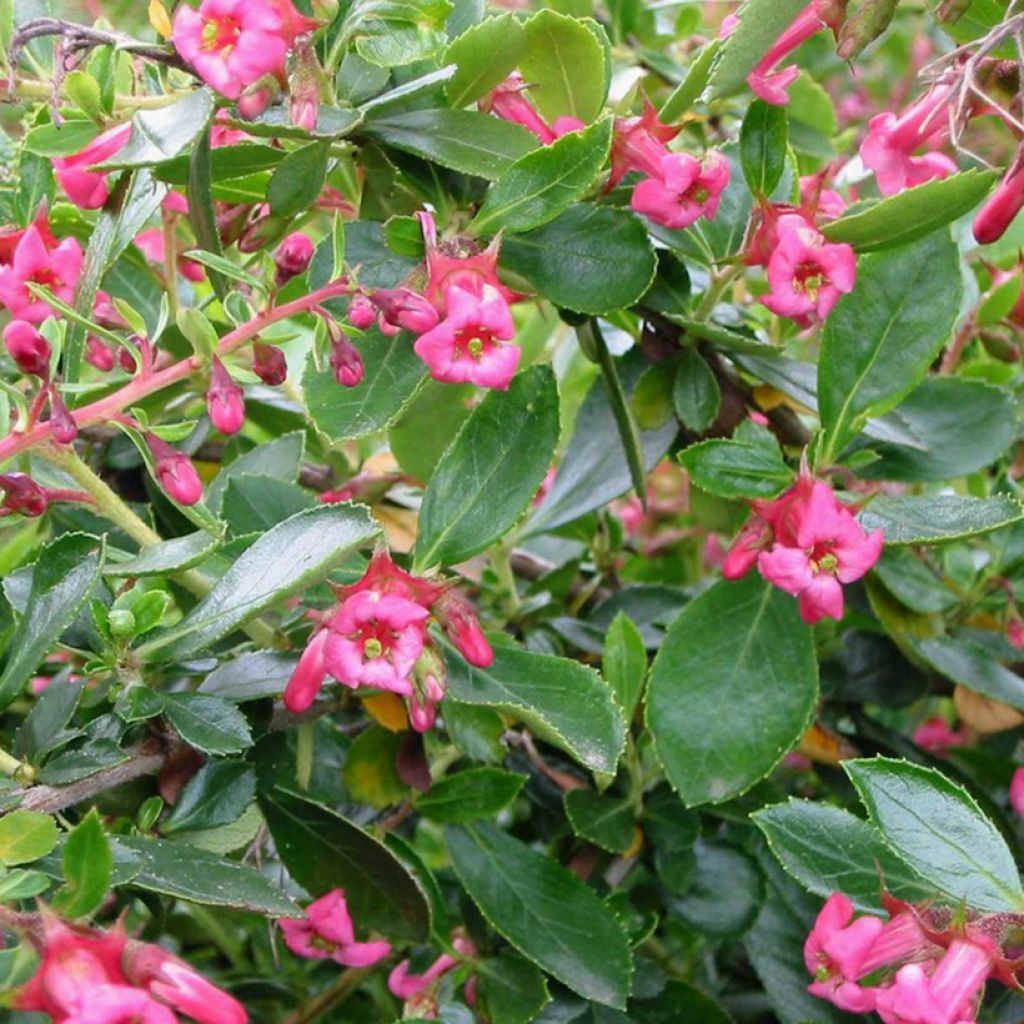

Escallonia Red Elf - Redclaws
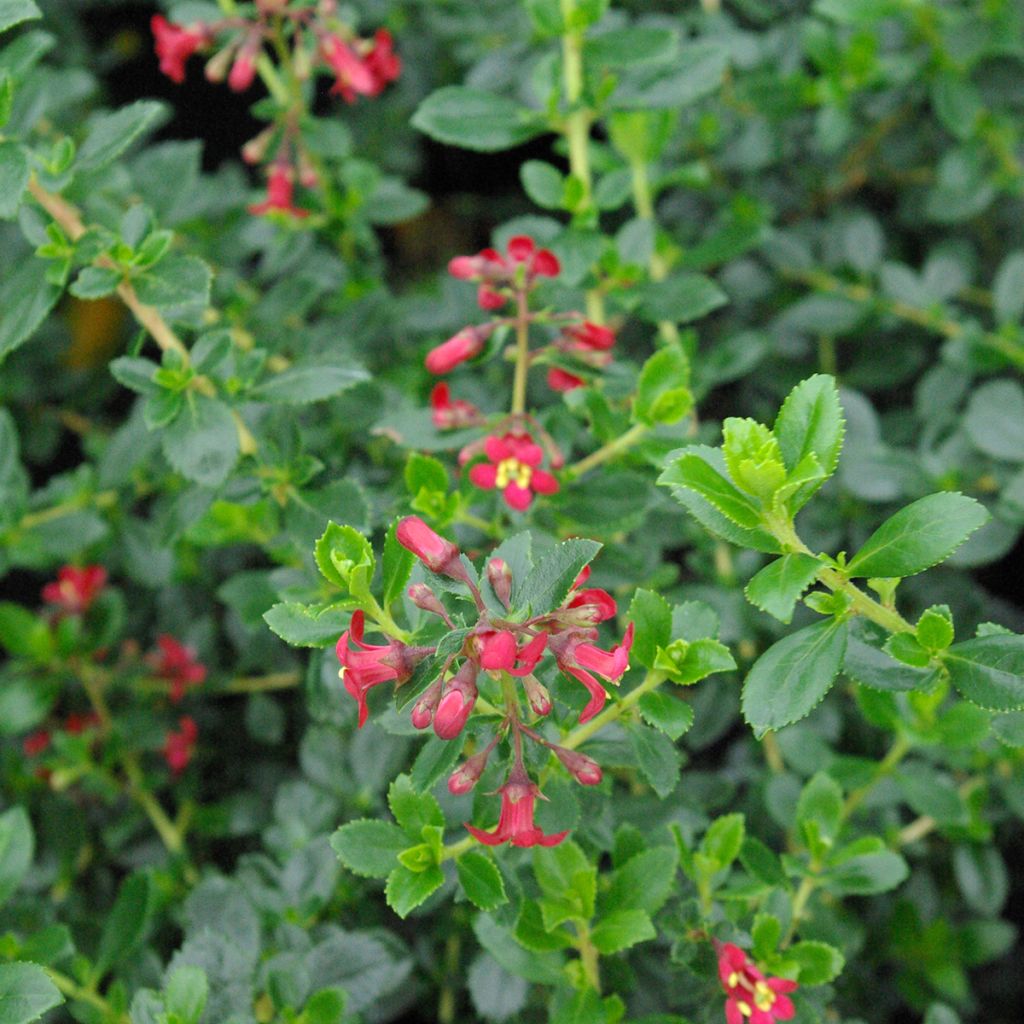

Escallonia Red Elf - Redclaws
Escallonia Red Elf - Redclaws
Escallonia (x) rubra Red Elf
Redclaws
This item cannot be shipped to the selected country
Delivery charge from €6.90
More information
Delivery charge from €6.90
More information
Schedule delivery date,
and select date in basket
This plant carries a 24 months recovery warranty
More information
We guarantee the quality of our plants for a full growing cycle, and will replace at our expense any plant that fails to recover under normal climatic and planting conditions.
From €7.90 for pickup delivery and €6.90 for home delivery
Express home delivery from €8.90.
Does this plant fit my garden?
Set up your Plantfit profile →
Description
Escallonia 'Red Elf' is an evergreen bush with a compact and spreading habit, whose dense, glossy dark green foliage, forms a beautiful backdrop for its abundant, red summer flowering. This excellent subject for a flowering hedge is attractive all year round, even in winter. Like many escallonias, it tolerates salt spray and summer drought once well established. This variety only dislikes excessively chalky soils. If your climate allows it, plant Escallonia, these rewarding bushes grow quickly, they are floriferous, often fragrant and very undemanding!
Escallonia 'Red Elf' is a horticultural creation selected in the Netherlands by the company PG Zwijnenburg from a cross between the varieties 'William Watson' and 'CF Ball'. Escallonias belong to the Escalloniaceae family and are native to temperate areas of South America and Chile. In the wild, these bushes grow among the thickets that cover the slopes or on the coasts exposed to salt spray. Escallonia rubra is native to Chile and neighbouring regions of Argentina, reaching as far as the Strait of Magellan. This species has passed on many characteristics to its descendant 'Red Elf'.
The hybrid variety 'Red Elf', which grows fairly fast, forms a branching bush with a spreading and dense habit, reaching between 1.50 m and 2 m in height and 1.50 m in width. Its small, tough, alternate, ovate leaves, with toothed edges, are dark green and shiny, measuring 2 to 6 cm in length. They are densely arranged, mostly towards the terminal part of the branches. Flowering takes place from June-July to August-September, for about a month, earlier or later depending on the climate, sometimes as early as May in hot climates. At the end of each branch, a 3 to 10 cm cluster of small bell-shaped flowers is formed, with five dark red petals, measuring 1 to 2 cm, enclosed at the base in a red to dark brown calyx.
Escallonias are a great alternative to Weigelas in mild climates, by the seaside as well as in gardens without irrigation. 'Red Elf' only dislikes cold winds, very harsh winters, and excessively chalky soils. Well known to gardeners in Brittany, Ireland, or England, this bush also thrives in Mediterranean climates, after careful planting and regular watering during the first two or three years. It does not mind heat or dry summers once established. It can even flower in slightly shaded situations. An essential plant in coastal gardens along with Olearia, Atriplex, Polygala myrtifolia, and Grevillea (in neutral to acidic soil). It also pairs well with spring-flowering shrubs like evergreen Ceanothus, brooms, Kolkwitzia amabilis, or botanical roses.
Plant habit
Flowering
Foliage
Botanical data
Escallonia
(x) rubra
Red Elf
Escalloniaceae
Redclaws
Cultivar or hybrid
Other Escallonias
View all →Planting and care
Escallonia 'Red Elf' is best planted in spring, or in autumn in mild climates. It requires well-drained, light, moist, slightly acidic or neutral soil, with little to no limestone, in a sheltered and warm location. It blooms more abundantly in the sun but tolerates shadier exposures in the south. Once well established, it requires no watering in summer, even in dry climates. It can withstand sea spray, but not cold winter winds. You can apply rose fertiliser in spring if your soil is very poor. Prune to balance the shape in February and September.
This bush is sensitive to heavy soils and stagnant moisture, especially in winter. If the soil is too heavy and calcareous, it may suffer from chlorosis; if this is the case, apply a dose of sequestrene every spring. Prune to one-third of its height in the first years to give the bush a dense and compact habit. You can also prune it into a ball shape. In regions near the hardiness zone limit, plant it in a location protected from prevailing winds, facing south, against a wall or west, in the back of a bed or in a hedge, and mulch the base in winter. If your escallonia has frozen in winter, it may regrow from the base in spring. Elsewhere, you can cultivate it in a large container to store it in winter, in a bright location, protected from heavy frost, remembering to water it occasionally.
Planting period
Intended location
Care
Planting & care advice
This item has not been reviewed yet - be the first to leave a review about it.
Evergreen shrubs
Haven't found what you were looking for?
Hardiness is the lowest winter temperature a plant can endure without suffering serious damage or even dying. However, hardiness is affected by location (a sheltered area, such as a patio), protection (winter cover) and soil type (hardiness is improved by well-drained soil).

Photo Sharing Terms & Conditions
In order to encourage gardeners to interact and share their experiences, Promesse de fleurs offers various media enabling content to be uploaded onto its Site - in particular via the ‘Photo sharing’ module.
The User agrees to refrain from:
- Posting any content that is illegal, prejudicial, insulting, racist, inciteful to hatred, revisionist, contrary to public decency, that infringes on privacy or on the privacy rights of third parties, in particular the publicity rights of persons and goods, intellectual property rights, or the right to privacy.
- Submitting content on behalf of a third party;
- Impersonate the identity of a third party and/or publish any personal information about a third party;
In general, the User undertakes to refrain from any unethical behaviour.
All Content (in particular text, comments, files, images, photos, videos, creative works, etc.), which may be subject to property or intellectual property rights, image or other private rights, shall remain the property of the User, subject to the limited rights granted by the terms of the licence granted by Promesse de fleurs as stated below. Users are at liberty to publish or not to publish such Content on the Site, notably via the ‘Photo Sharing’ facility, and accept that this Content shall be made public and freely accessible, notably on the Internet.
Users further acknowledge, undertake to have ,and guarantee that they hold all necessary rights and permissions to publish such material on the Site, in particular with regard to the legislation in force pertaining to any privacy, property, intellectual property, image, or contractual rights, or rights of any other nature. By publishing such Content on the Site, Users acknowledge accepting full liability as publishers of the Content within the meaning of the law, and grant Promesse de fleurs, free of charge, an inclusive, worldwide licence for the said Content for the entire duration of its publication, including all reproduction, representation, up/downloading, displaying, performing, transmission, and storage rights.
Users also grant permission for their name to be linked to the Content and accept that this link may not always be made available.
By engaging in posting material, Users consent to their Content becoming automatically accessible on the Internet, in particular on other sites and/or blogs and/or web pages of the Promesse de fleurs site, including in particular social pages and the Promesse de fleurs catalogue.
Users may secure the removal of entrusted content free of charge by issuing a simple request via our contact form.

































